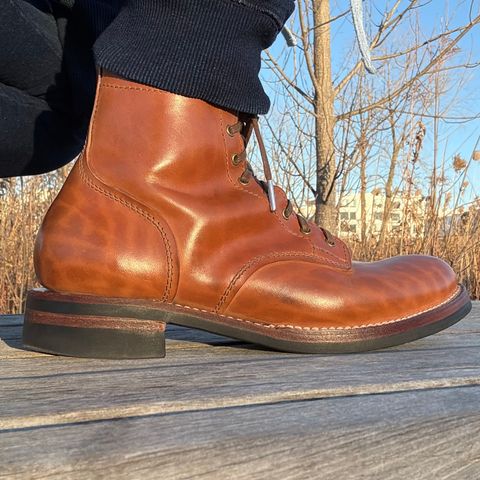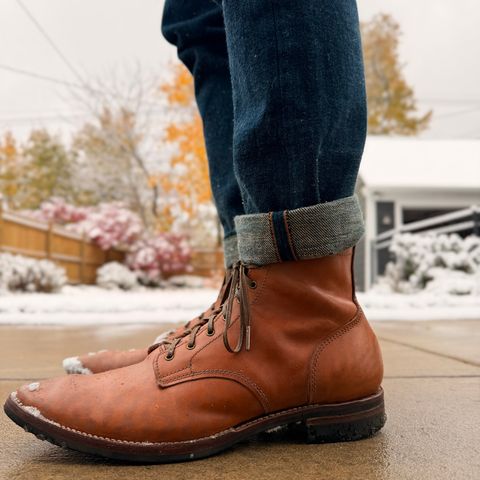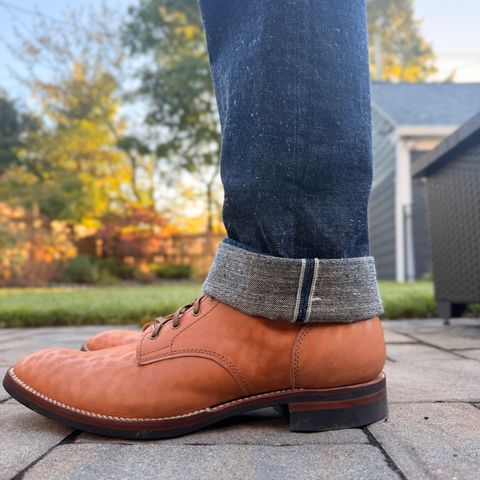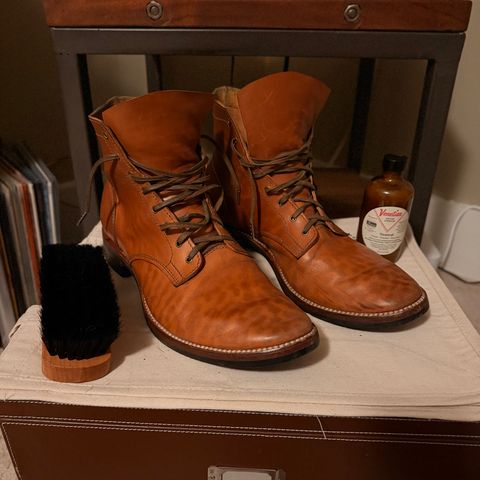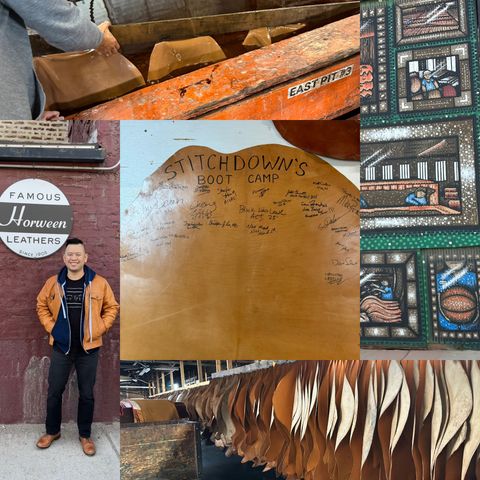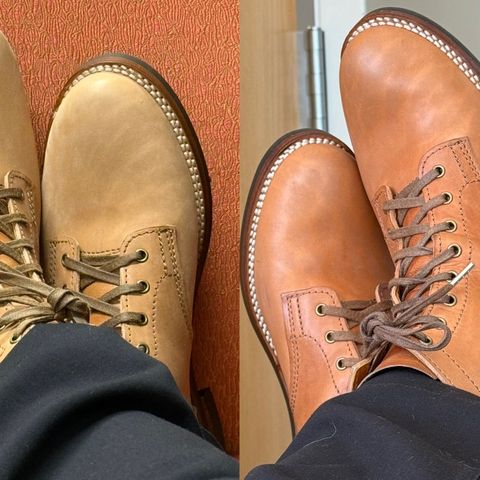About
Horsehide strips are a specialized leather product made by Horween Leather Company from the thicker back section of horse hides. These odd-shaped pieces of leather are positioned between the horse's front and the shells, sometimes called "north of cordovan," and undergo the same initial tanning process as Horween's Shell Cordovan for the first 45 days.
About
Horsehide strips are a specialized leather product made by Horween Leather Company from the thicker back section of horse hides. These odd-shaped pieces of leather are positioned between the horse's front and the shells, sometimes called "north of cordovan," and undergo the same initial tanning process as Horween's Shell Cordovan for the first 45 days.
The strips are produced using a slow and gentle vegetable tan combined with hot stuffing methods, creating a dense leather with notable moldability. They are available in two distinct tempers: hard rolled strips that are stiff and difficult to bend, and soft rolled strips that are more pliable and flexible. Horween Russet Horsehide Strips represent one popular color option within this leather type.
Manufacturing process
Horsehide strips are crafted from the thicker back half of the horse hide and follow a pure vegetable pit tannage process. The leather undergoes the same initial treatment as Shell Cordovan, being tanned alongside cordovan shells for the first 45 days using traditional slow and gentle vegetable tanning methods combined with hot stuffing techniques.
This extensive tanning process creates the characteristic dense, tight fiber structure that makes horsehide strips particularly suitable for carving and cold molding applications. The vegetable tanning method contributes to the leather's ability to hold intricate shapes and details when worked.
Rolling variants
Horween produces horsehide strips in two distinct temper variations through different rolling processes:
Hard rolled strips
Hard rolled strips undergo a wet rolling process where moisture is added before rolling. As the leather dries, the water causes the vegetable tanned material to firm up, creating a hard temper. These strips are notably stiff and difficult to bend, making them suitable for applications requiring rigid structure.
Soft rolled strips
Soft rolled strips are processed without additional moisture before rolling. The mechanical action of the rolling process naturally softens the strips through physical manipulation alone. This results in strips that are more pliable and bendable while maintaining the dense fiber structure characteristic of horsehide.
Physical specifications
Horsehide strips typically measure approximately eight to 11 inches wide at their widest point, with lengths averaging 42 to 46 inches. The leather is available in two weight categories: seven to nine ounces and nine-plus ounces. Thickness can range from four to 10 ounces (1.6 to 4 millimeters), though the thickness can fluctuate dramatically even across the same hide.
The strips maintain the coarse grain characteristic of horsehide, with the center section displaying particularly pronounced grain patterns. Due to their irregular shape derived from the anatomical structure of the horse, these pieces can present challenges in certain applications where consistent dimensions are required.
Characteristics and properties
Horsehide strips exhibit several distinctive characteristics that differentiate them from cowhide leather products. The material features a coarser grain pattern and demonstrates greater abrasion resistance compared to cowhide alternatives. The different fiber structure of horsehide displays greater variation and natural markings than cowhide, contributing to the unique appearance of finished products.
The dense, tight fiber structure provides excellent moldability, allowing craftspeople to shape the leather into complex forms. This structural density also contributes to the leather's durability and resistance to wear over time.
Applications
The moldability and dense structure of horsehide strips make them particularly suitable for specific crafting applications. Common uses include holsters, belts, and small leather goods where structural integrity and shape retention are important. The material is also favored for watchbands, including Apple Watch bands and custom-length timepiece straps.
The carving properties of the leather make it popular among leatherworkers who require a material that can hold fine detail work and maintain crisp edges over time. The stiffness of hard rolled variants makes them especially suitable for items requiring rigid construction, while soft rolled strips are preferred for applications requiring some flexibility.
References
"Horsehide Strips - Horween". Mill Hand Made. Retrieved September 5, 2025.
"All About Horween Leather: Shell Cordovan, Chromexcel, Dublin and More". Guarded Goods. Retrieved September 5, 2025.
"Leathers". Horween Leather Co. Retrieved September 5, 2025.
"Horween Chromexcel Double Horse Fronts". The Tannery Row. Retrieved September 5, 2025.
